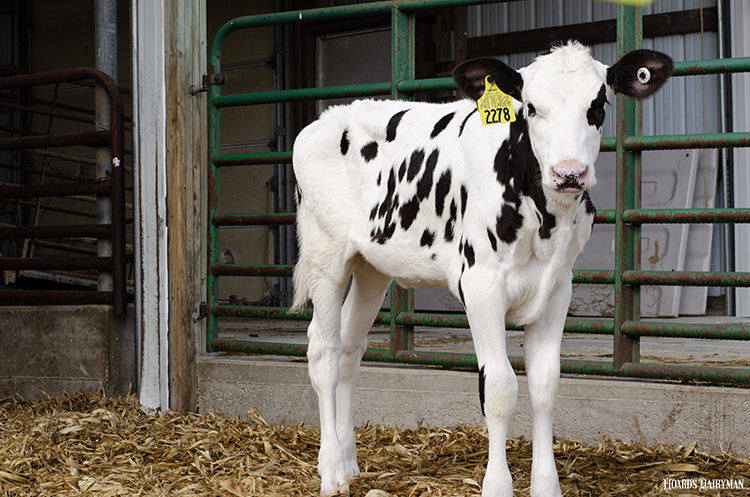
During his presentation at the Dairy Calf and Heifer Association’s annual conference, University of Guelph professor and veterinarian Dave Renaud talked about the effect common calfhood diseases can have on an animal’s productivity. He shared data from their research project that looked at the presence of diarrhea and how it influences growth, antimicrobial treatment, and mortality.
In the study, more than 2,600 calves were evaluated daily for 77 days. For the first 28 days after they arrived at a calf research facility, each calf was assigned a fecal score of 0 to 3. Calves that earned a score of 2 or 3 were considered to have diarrhea.
One purpose of the study was to evaluate the challenges that calf growers face when animals received by their facility have diarrhea early in life. Obviously, growth rate is an important factor when raising dairy calves. In this data set, calves that experienced no days with diarrhea grew an average of 980 grams per day, or 2.2 pounds. “That is the benchmark we want to be at during the preweaned period,” Renaud noted.
Calves that had diarrhea just one day during that period grew 5 grams less per day than calves with zero days of diarrhea. More sizeable losses were seen in calves that had diarrhea five days during the 77-day period. Those calves grew 800 grams or 1.8 pounds per day, a reduction of 180 grams. The calves that were identified as having diarrhea for nine days had a growth rate of 730 grams or 1.6 pounds, 250 grams less per day than calves with no diarrhea.
“These can be substantial losses,” Renaud shared. “These calves are losing a lot of body weight gain over that short period of time.”
When calves have diarrhea, Renaud said they also have a higher risk of respiratory disease. He noted that the facility in this study had some challenges with respiratory disease, with 56% of calves being treated during that preweaned period.
When combined with diarrhea, respiratory disease rates went up. One day of diarrhea pushed respiratory disease treatment up to 64%. Five days of diarrhea raised the incidence of respiratory disease to 67%, and in calves with nine days of diarrhea, their risk of respiratory disease skyrocketed to 81%.
“When we have calves with diarrhea, it sets them up for higher levels of respiratory disease,” Renaud reiterated.
Diarrhea also had a significant effect on mortality. “When calves have diarrhea, they are losing fluids and become dehydrated, and that’s ultimately the reason these calves die,” Renaud explained.
The preweaned calf mortality rate on this farm was 4% in calves that had no bouts of diarrhea. Calves with one day or five days of diarrhea faced a death rate of 6%. In the group of calves that had diarrhea for nine days, death loss was 15%.
When summarizing the data, Renaud stated, “Clearly, we want to lessen the duration of diarrhea.” There’s no doubt that the less days calves “call in sick,” the better.








